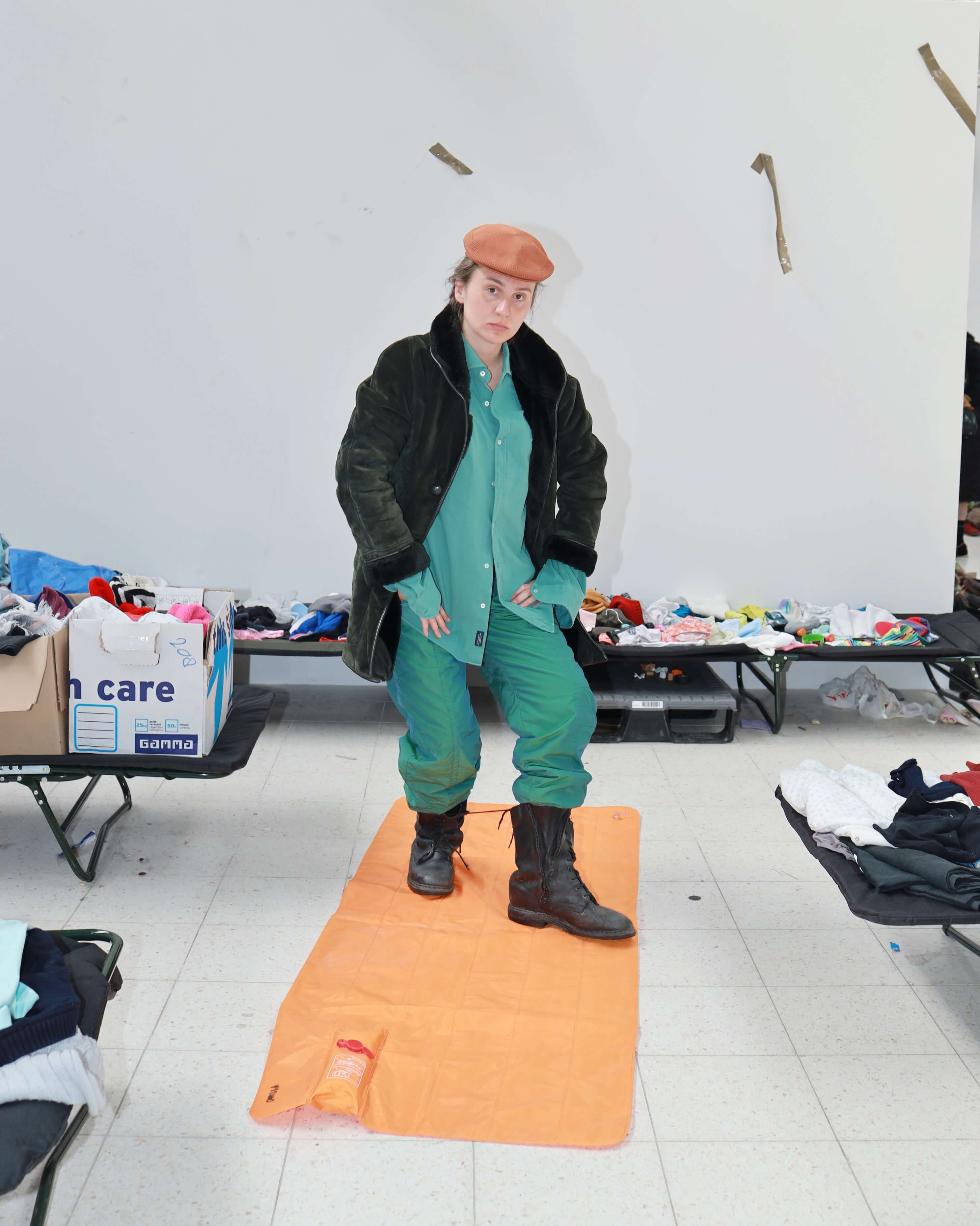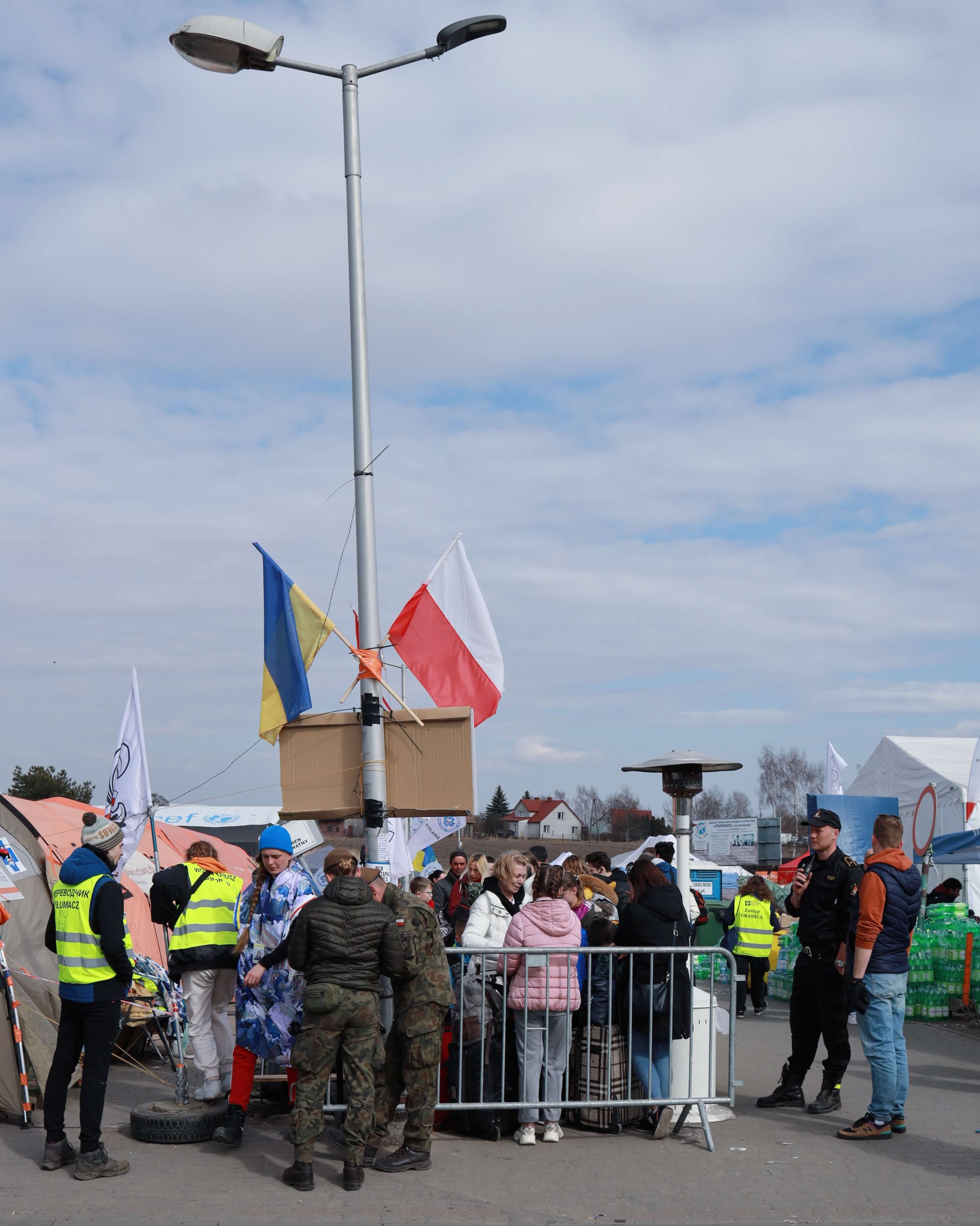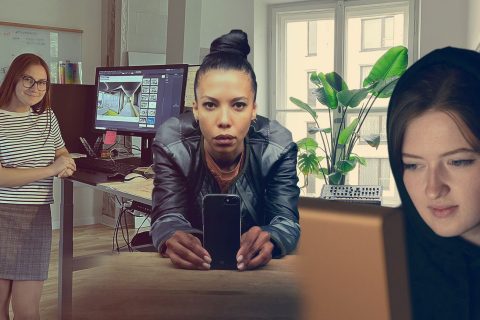
Going Out Into the World: Migrants’ Looks Out of the Ukrainian-Polish Border

A photographer living in Zurich
In 2016 I was photographing the east of Ukraine. Then I twice thought I would die. Since then I’ve known for sure that I don’t want to feel the same fear again. A week before the full-scale invasion was the first time I accepted that war is around the corner, when the companies started to decline the insurance of flights to Ukraine. Then there were conversations with friends on bug-out bags, backup plans, who would go fight and who would go to the frontline as a medic. I had neither a plan nor a bag packed. I lived in Kyiv for three months with two outfits – the rest things had been in Zurich since the last autumn, at my fiance’s. On February 21, the situation became very tense, and I left Ukraine for Poland.
This was not my first visit here: in 2017, I studied at the Academy of Arts in Warsaw. There I covered the topic of Ukrainian repatriates with Polish roots and migration during the ATO period. With the beginning of a full-scale war, a team of documentary filmmakers invited me to join them on the shooting of a film about Ukrainians leaving Irpin for Spain. That’s how I got to the Polish border.






The pedestrian checkpoint resembles a catwalk on the Polish side. It is a narrow corridor of about 500 meters that has literally everything from pet food, maternity and children items to food, clothes, games, and bicycles. People from different countries have volunteered there. It could have been some kind of outdoor festival if it weren’t for the reason that brought everyone there.
I found myself in this corridor in the fourth week of the war and spent several days there. At that time the 25-kilometer queues of cars on the way to Poland were no longer there, but many people crossed the border on foot instead. Women with children were usually exhausted by the time they reached this corridor. However, despite the exhaustion, almost everyone had a manicure on, their hair and make-up done, clad in modest but fresh clothes. They walked down the hall, grabbed water and snacks, and passed other things indifferently. So I wondered: what kind of clothes do they offer there?
There is a certain stigma about migrants. It is often believed that these are poor people who will be glad to receive anything. They are pitied, sympathized with and are offered things which are sometimes in a very bad condition. On the other hand, people leaving Ukraine had different financial situations. For four days at the Polish border, I did not see a single woman who would take second-hand clothes. But does this mean that they do not need any help and compassion?
At the Polish border, I did not see a single woman who would take second-hand clothes.




These pictures are drafts of the coming project. I did not want to reflect on the topic of migration through reportage or street photography. Instead, I tried to make something interesting out of not so pretty clothing. To imagine what Ukrainians could look like if they were dressed in what they are offered.
The pictures were taken in two locations. The first is a supermarket near Medyka, which has become a centre for the displaced people. There are strict rules there, security at every corner, which allowed us to do everything in half an hour. I quickly combined several outfits that are suitable for different situations: going for a walk in the evening, working, spending the night in the forest, going out in public, something to put on a child to stretch out in the yard. There were pants that I liked among all these things, but I was too embarrassed to take them. So I left them for a woman who fled Kharkiv.
Looks are suitable for various situations: going for a walk in the evening, working, spending the night in the forest, going out in public, something to put on a child to stretch out in the yard.
The second location is the very border corridor and a huge tent of the Chinese diaspora from France. The Chinese were constantly taking selfies and streaming, but none of the Ukrainians approached, probably for the same reason. I saw a bunch of things they had and got permission to photograph them. However, soon the manager came and said that, well, these clothes are not here for the entertainment. To which I replied: “You brought clothes for the people. I want to show it to them”. Obviously, I was asked to leave.




I have repeatedly heard that the displaced people from Ukraine are called “class A migrants”: it is easy for them to get documents, find work, they are often educated and speak foreign languages well.
Displaced people from Ukraine are called “class A migrants”.
Discussing migrants sometimes turns into clashes — especially on social media. It seems to me that the misunderstanding between those who stayed in Ukraine and those who left can be settled. While there is war, no one should interfere with anyone. An open conversation, a willingness to listen, a common cause can save a relationship. I lost touch with several close friends because they didn’t get my concern and I didn’t understand their stonewalling. I think it is important not to shut down in our worlds and to remember that we have a common cause and goal.






New and best








